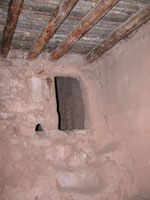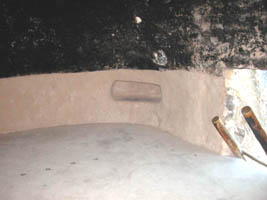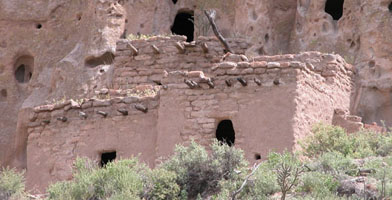An Easy Stroll with a Lot of History
The main trail behind the visitor's center is a paved path with a few ladders that one can optionally climb to peer inside the rooms. The paved path is not a long or strenuous trail and is meant to give visitors a quick and close up view of the ruins. This combined with the movie at the visitor's center and the exhibit room are estimated by the park brochure to take an hour.

There is a inexpensive guide (pamphlet) at the visitor's center that accompanies the trail which we recommend. There is also another booklet of the petroglyphs along the trail which are hard to see, making the guide useful.
The first major site along the path (shown in the photo above) had a huge kiva that you could look into with a visible sipapu. The remains of the walls in this area show a very extensive community.




The path then brings you to the cliff where dwellings were built in front of. A few traces of where the walls were is indicated by paint. You can still see today where the homeowner painted the inner back wall which was the face of the cliff. Pockets in the cliff extended the household. There is a reconstructed home (photo below) to demonstrate how the homes really looked, and several ladders that you can use to access the pockets in the cliffs if you wish.


One of the rooms in the cliff that you could climb into had holes in the floor (photo above) indicating a loom had been set up.
Massive crowds can use this trail, and sometimes come in bus loads. We found that if you are on the trail by 7 am, then you have the area almost to yourself. The lighting may not be what you want for optimum photography, but the serenity is priceless.
For slightly more quiet hiking during crowded times, you can try the Kiva Hike or our favorite the Tsankawi Trail which is outside the main park in a separate area.
